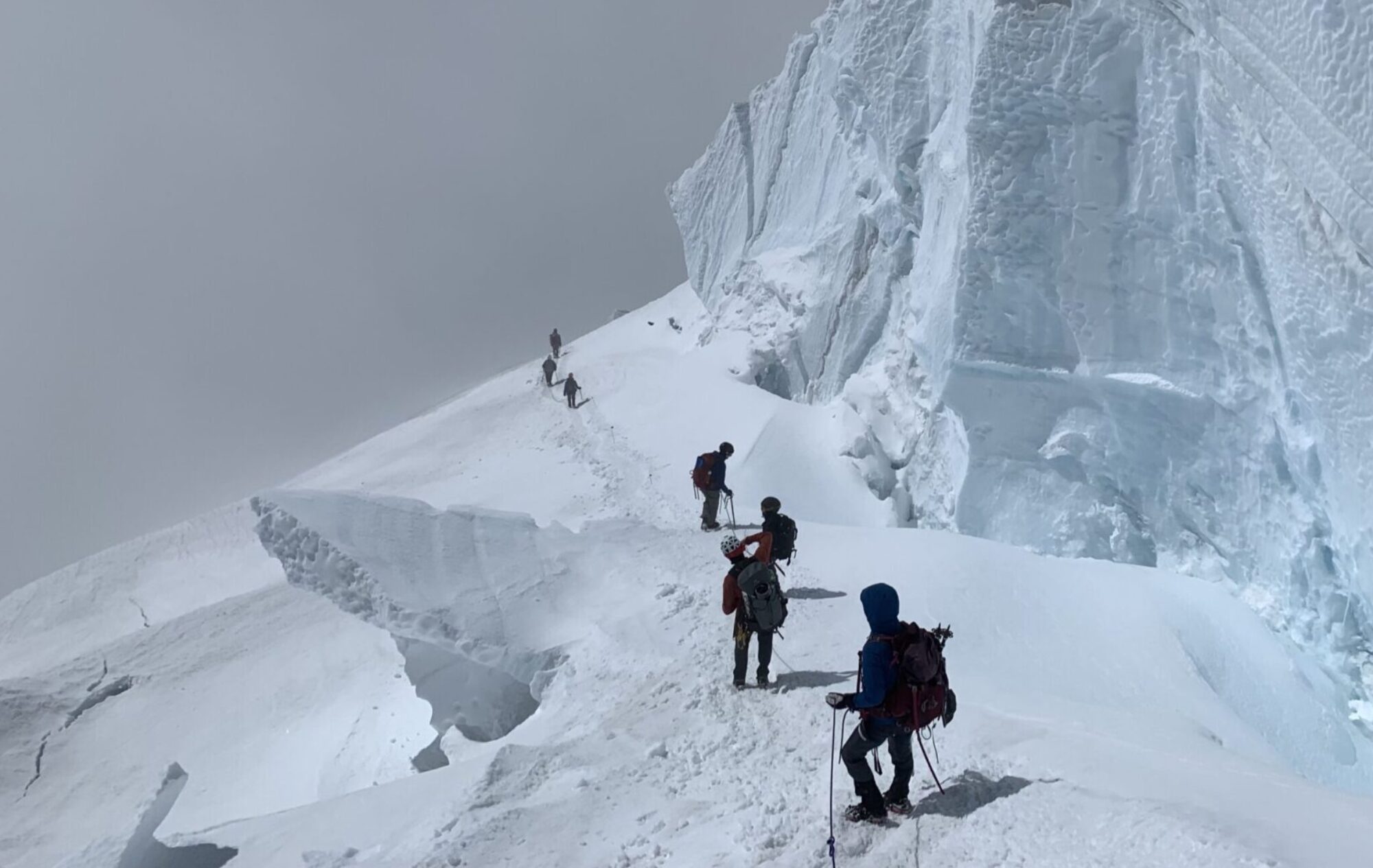Exactly how many 14ers are there in Colorado? Technically there are probably around 80 highpoints that exceed 14,000 feet. However, there were times in the past when less than 50 peaks were recognized as official summits. More recently the numbers seem to range between 52 and 58 peaks. So the question becomes, what defines a mountain? When I was young I learned about two criteria that were used:
- First, there is the 300′ rise rule. That is, if you rise 300 feet from the lowpoint in the connecting ridge between you and your highest neighbor, then you qualify as a distinct peak.
- Second, was the 1 mile of separation rule. The idea was that you had to be at least 1 mile from any mountain higher than you to be considered a distinct peak. It seems to me this rule has been ignored for a long time.
So, assuming that we ignore the second “rule of separation”, and we just go with the “rule of rise” then it is easy. 53 peaks in Colorado qualify as officially ranked 14ers. So why was a list of 52 so common years ago? Well, they left out Unnamed Pt. 14,081. Sure, it rose 301 feet from it’s connecting saddle with Kit Carson, but perhaps as a remnant of the “rule of separation”, it was discounted because it is a mere .2 miles from Kit Carson, or maybe there is just something unsatisfying about climbing unnamed points. When viewed from a distance, Unnamed Pt. 14,081 does not really distinguish itself and just looks to be a lump on the greater Kit Carson Mountain. However, sometime after the Challenger disaster in 1987, Unnamed Pt. 14,081 was officially renamed Challenger Pt., and since then, and with the preeminence of the 300′ rule to define a peak, its status as an official 14er is pretty much set.
So if we have explained where the lists of 52 and 53 14ers come from, what about the list of 54 and 55? To explain these variations, first we need to go back and drop Challenger Pt. from our list to get back down to 52. Two 14ers that that do not meet either of the two aforementioned rules are North Maroon and El Diente. I am not completely sure why these two peaks are given exempt status, but by any route they are difficult climbs that clearly deserve status as officially ranked peaks. So I call them the sentimental favorites. Only a true math and numbers person would remotely consider calling for example Mt. Bross more deserving of ranked status than North Maroon (Of course you could apply this same logic to North Massive and Sunlight Spire, but that has not been done yet). So that is where we get the list of 54 from. Take the standard 52 and add the sentimental favorites El Diente and North Maroon. Then, to get to 55 you add Challenger back on to the list of 54.
I used to go with the list of 55. Then 14ers.com came along and was using a list of 58 that included 3 summits that are pretty easy when done with their taller neighbors. At first I thought it was a little ridiculous to include Cameron, Conundrum, and North Eolus. However, after I understood the criteria I liked it because it was decidedly simple. On this list to be an officially ranked 14er you simply have to have a name officially assigned by the United States Geological Survey (USGS). I like the simplicity of the criteria so that is the list that I will go with.
For purposes of setting 14er records, it seems there is a long standing tradition to go with the officially recognized 14ers of the day. Currently I think 55 or 58 still stand up to scrutiny, although if the record is set with 58, then likely future record setters would choose to go with that list as well.
